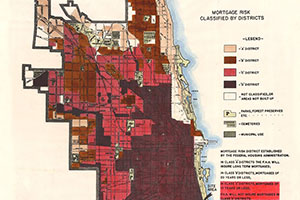How Many People Starve To Death In America? Analyzing the Shocking Statistics
NEWS | by
In the United States, a country known for its wealth and resources, the concept of people starving to death may seem inconceivable. However, malnutrition and food insecurity still pose significant challenges, affecting millions of Americans. This article delves into the statistics and underlying causes of starvation deaths in the U.S., offering a comprehensive overview of this critical issue.
Understanding Food Insecurity
Food insecurity refers to the lack of consistent access to enough food for an active, healthy life. It is measured by the U.S. Department of Agriculture (USDA) through surveys that ask about the confidence in obtaining food, the quality and variety of food eaten, and whether food intake was reduced at any time during the year due to lack of resources.
Statistics: According to the USDA, in 2021, over 34 million people, including 9 million children, lived in food-insecure households. While these statistics indicate a high level of food insecurity, they do not directly correlate to starvation deaths, which are relatively rare but tragic occurrences.
Starvation Deaths in the U.S.
Direct data on starvation deaths in the U.S. are sparse because mortality from starvation is often recorded under various medical or indirect causes such as malnutrition, anorexia, or other underlying health conditions exacerbated by lack of food.
Causes: Factors contributing to severe malnutrition or potential starvation include extreme poverty, homelessness, mental illness, and substance abuse disorders. These issues can prevent individuals from accessing sufficient nourishing food regularly.
Government and Non-Governmental Responses
Several federal and state programs aim to reduce food insecurity and prevent any instances of starvation:
- Supplemental Nutrition Assistance Program (SNAP): This program, formerly known as food stamps, provides financial assistance to purchase groceries.
- National School Lunch Program: Offers free or reduced-price meals to eligible students, ensuring children receive at least one nutritious meal per day during the school year.
- Local Food Banks and Charities: Organizations like Feeding America coordinate with local food banks to distribute food to those in need.
Despite these programs, gaps in coverage and eligibility criteria mean not everyone who needs help receives it, leading to continued risks of severe food insecurity and related health complications.
Research and Reporting on Starvation Deaths
- 0.89/100.000 people starve to death in America per year.
- As of 2022, approximately 12.8% of U.S. households experienced food insecurity at some point during the year, which translates to about 44.2 million Americans living in food-insecure households (USAFacts) (Food Research & Action Center).
- Around 17.3% of households with children reported food insecurity, highlighting the heightened vulnerability among families with minors (Food Research & Action Center).
- Food insecurity rates were disproportionately higher among Black and Hispanic households at 22.4% and 20.8% respectively, compared to 9.3% for White non-Hispanic households (Food Research & Action Center).
- Approximately 6.7 million people were supported by the Special Supplemental Nutrition Program for Women, Infants, and Children (WIC) as of September 2023, with enrollment showing an increase of 8.5% since July 2021 (USAFacts).
- SNAP (Supplemental Nutrition Assistance Program) enrollment grew to 41.4 million in October 2023, up from 37.1 million at the start of 2020. This reflects the critical role of SNAP in providing nutritional support, although the average benefit per person has seen fluctuations due to changes in federal funding (USAFacts).
- The prevalence of food insecurity among seniors and individuals living alone remains a significant concern, with the rate of food insecurity among households with older adults higher than in the general population (Food Research & Action Center) (Coalition on Human Needs).
Conclusion
While outright starvation deaths are relatively rare in the United States, severe malnutrition and food insecurity affect millions. Understanding and addressing the root causes of food insecurity is crucial to preventing these tragic deaths and improving the health and well-being of all Americans.
References
- USDA Report on Food Security in the U.S., 2021, https://www.ers.usda.gov/publications/pub-details/?pubid=102076
- SNAP Fact Sheet, https://www.fns.usda.gov/snap/recipient/eligibility













